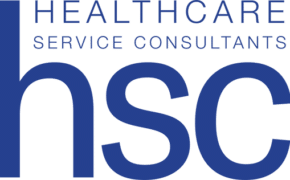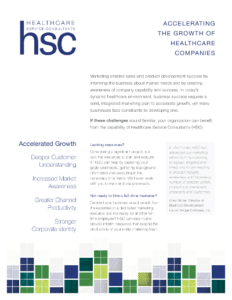Table of Contents
This article explores some of the drivers behind technology convergence and the impact it has on marketing strategy.
The healthcare industry is no stranger to convergence through mergers and acquisitions. In the U.S. healthcare market, provider organizations have been consolidating at a significant rate. According to recent Frost & Sullivan research, this movement will continue. The result? A shift from 1,600-plus hospital organizations to fewer than 600 larger, multi-state networks.
The trend is not isolated to healthcare provider organizations. It’s also prevalent in the Healthcare IT vendor space. We have seen countless partnerships, mergers, and acquisitions between organizations with complimentary product offerings.
Here, we’ll explore some of the drivers behind technology convergence and the impact it has on marketing strategy.
1. What is technology convergence?
Technology convergence occurs when two or more independent and distinct technologies integrate. Eventually, they become a unified platform.
A prime example lives in the mainstream consumer market, via smartphones. Email, photography, video recordings, health monitoring, and a myriad of other applications combine to form a complete mobile platform.
In the healthcare space, large-scale technology convergence involves consolidation of:
- patient management
- ordering
- billing
- bed management
- clinical specialties
- analytics
- many other workflows and data points
These are all unified within an electronic health record (EHR) platform.
2. Why is technology convergence common in healthcare?
Convergence in healthcare IT is a natural result of innovation and the emergence of new technologies. Startup companies enter the industry with standalone offerings that address pervasive new or neglected problems. A recent example would be the vast number of medical imaging artificial intelligence (AI) algorithms and applications that operate independently and address unique and specific use cases.
But, to achieve widespread mainstream adoption in the healthcare industry, simplification and streamlining of workflow is essential. This requires integration with mainstream technologies like:
- EHR
- Enterprise Platforms
- Departmental solutions such as radiology PACS
- Cardiovascular imaging and information systems
- Lab information systems, etc.
Ultimately, healthcare providers realize that certain technologies are deemed to be additive to a primary platform or system in order to maintain a streamlined clinical workflow. This demand is a major driver for technology convergence.
Conversely, arm’s length integrations can be challenging and costly to maintain and support. Established OEM’s often recognize the value potential of these new, independent offerings. Their goal is to strengthen their product portfolios and market position. Many proceed with outright acquisition and more meaningful consolidation of these technologies into their own solution platforms.
3. What does technology convergence mean for product marketing?
With this in mind, a challenge arises. Product marketers must ensure that the product strategy acknowledges the possibility of convergence. This involves developing:
- Product strategy that anticipates the possibility for convergence. It should incorporate the necessary features and integrations into the roadmap.
- Channel strategy that identifies ideal partnerships and distribution channels. These should increase sales and strengthen the market position.
- Messaging strategy that communicates the key value propositions of your offering within the context of the broader, consolidated ecosystem.
Strategy development begins with first determining whether convergence is beneficial, or even inevitable, for your specific product offering(s). We advise these five steps:
- Analyze the market to understand how the use cases you’re addressing are evolving.
- Know how your solution fits into overarching workflows and technology ecosystems today and in the future.
- Identify what other players exist in, or might emerge into your target market(s).
- Determine the appropriate approach to solution design.
- Then, plan a roadmap with integration and consolidation in mind.
If convergence becomes a desired or necessary path, it is important to develop your go-to-market strategy and messaging accordingly. This involves evaluating and selecting integration or distribution partners that will best:
- augment your product’s capabilities,
- bolster your market position, and
- increase sales reach and opportunities
Finally, one last component for success. Your product messaging should clearly and cohesively communicate a distinct value proposition within the context of a converged solution. Craft targeted messaging that compliments that of your OEM and distribution partners. Doing so will go a long way in securing and maintaining successful partnerships. It also helps you progress towards a desired exit strategy.
4. Conclusion
Technology convergence in the healthcare IT industry is common. It is a natural and beneficial side effect of technological innovation. While there are many forces behind it, we attribute the vast majority to three primary drivers:
- To gain access to new customers or market segments
- To rapidly expand product functionality or capabilities
- To streamline workflow and reduce complexity
Do you foresee technology convergence in your particular product area? Our team of healthcare IT experts are well-versed in the dynamics of technology convergence. We can help you build a complete and proactive product marketing strategy. If you’re ready to maximize your value within a consolidated healthcare enterprise, we can help. Contact us to learn more.
Photo by Lance Grandahl on Unsplash




